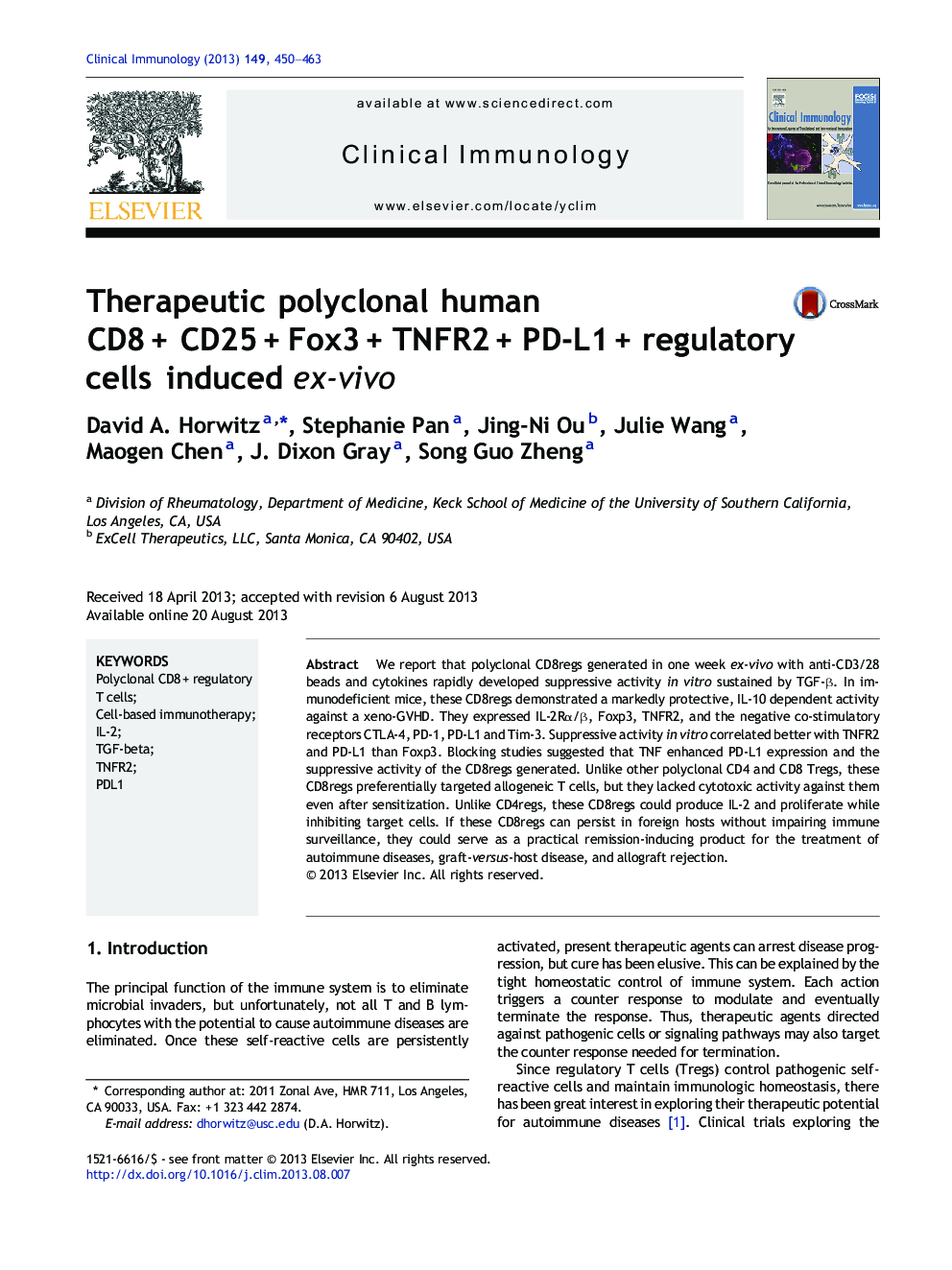| Article ID | Journal | Published Year | Pages | File Type |
|---|---|---|---|---|
| 6087613 | Clinical Immunology | 2013 | 14 Pages |
â¢A method to generate polyclonal human CD8regs ex-vivo that preferentially target allogeneic cells.â¢Evidence these CD8regs have stronger protective activity in vivo than that reported for CD4regsâ¢Surface TNFR2 and PD-L1 correlated better than Foxp3 with non-cytotoxic suppressive activity.â¢The possibility that allogeneic polyclonal Tregs can be used as a therapeutic product
We report that polyclonal CD8regs generated in one week ex-vivo with anti-CD3/28 beads and cytokines rapidly developed suppressive activity in vitro sustained by TGF-β. In immunodeficient mice, these CD8regs demonstrated a markedly protective, IL-10 dependent activity against a xeno-GVHD. They expressed IL-2Rα/β, Foxp3, TNFR2, and the negative co-stimulatory receptors CTLA-4, PD-1, PD-L1 and Tim-3. Suppressive activity in vitro correlated better with TNFR2 and PD-L1 than Foxp3. Blocking studies suggested that TNF enhanced PD-L1 expression and the suppressive activity of the CD8regs generated. Unlike other polyclonal CD4 and CD8 Tregs, these CD8regs preferentially targeted allogeneic T cells, but they lacked cytotoxic activity against them even after sensitization. Unlike CD4regs, these CD8regs could produce IL-2 and proliferate while inhibiting target cells. If these CD8regs can persist in foreign hosts without impairing immune surveillance, they could serve as a practical remission-inducing product for the treatment of autoimmune diseases, graft-versus-host disease, and allograft rejection.
